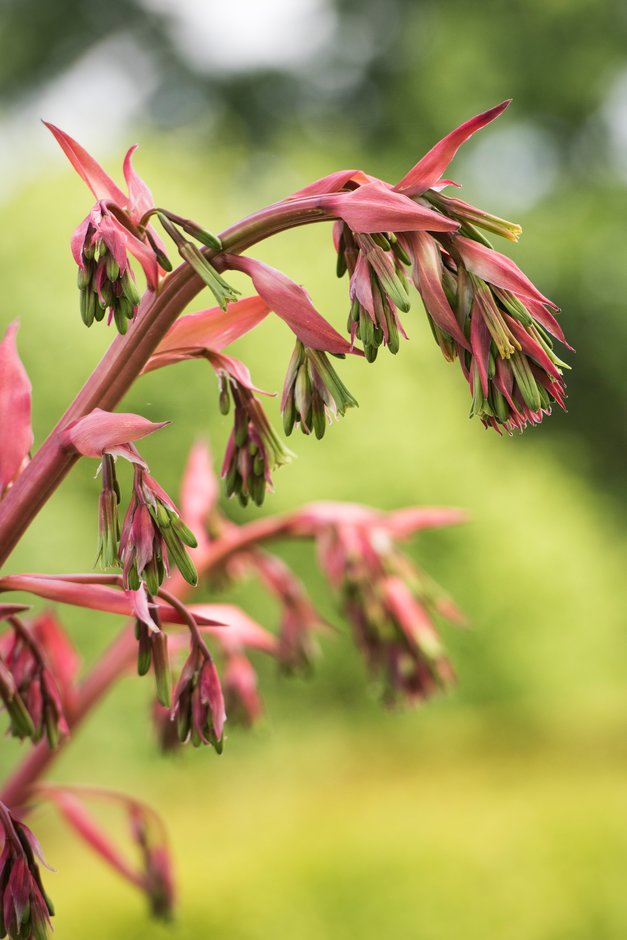Beschorneria yuccoides
yucca-leaved beschorneria
A perennial forming a large clump of slightly fleshy, grey-green, strap-shaped leaves to 20cm in length. Yellow-green tubular flowers with showy red bracts borne in arching racemes to 1.5m in height
Size
Ultimate height
1–1.5 metresTime to ultimate height
5–10 yearsUltimate spread
1–1.5 metresGrowing conditions
Moisture
°Â±ð±ô±ô–d°ù²¹¾±²Ô±ð»åpH
Acid, Alkaline, NeutralColour & scent
| Stem | Flower | Foliage | Fruit | |
| Spring | Green Grey Silver | |||
|---|---|---|---|---|
| Summer | Green Red Yellow | Green Grey Silver | ||
| Autumn | Green Grey Silver | |||
| Winter | Green Grey Silver |
Position
- Full sun
Aspect
West–facing or ³§´Ç³Ü³Ù³ó–f²¹³¦¾±²Ô²µ
Exposure
ShelteredDrought resistance
Yes Hardiness
H3Botanical details
- Family
- Asparagaceae
- Native to GB / Ireland
- No
- Foliage
- Evergreen
- Habit
- Clump forming
- Genus
Beschorneria are large, clump-forming evergreen perennials with strap-shaped, somewhat succulent leaves and nodding tubularflowers in arching racemes with conspicuous red bracts in late spring or early summer
- Name status
Correct
- Plant range
- Mexico
How to grow
Cultivation
Can be grown outdoors in warmer areas, in a very well-drained humus-rich loam but will require protection from frosts. Under glass grow in full light in standard cactus compost. When in growth water moderately and apply a balanced liquid fertiliser monthly. Water sparingly in winter
Propagation
Propagate by seed sown in spring at 21°C. Offsets can be carefully removed and potted up in spring
Suggested planting locations and garden types
- Architectural
- Coastal
- City and courtyard gardens
- Wall side borders
Pruning
No pruning required
Pests
May be susceptible to scale insects
Diseases
Generally disease-free
Get involved
91µ¼º½ is the UK’s leading gardening charity. We aim to enrich everyone’s life through plants, and make the UK a greener and more beautiful place.
